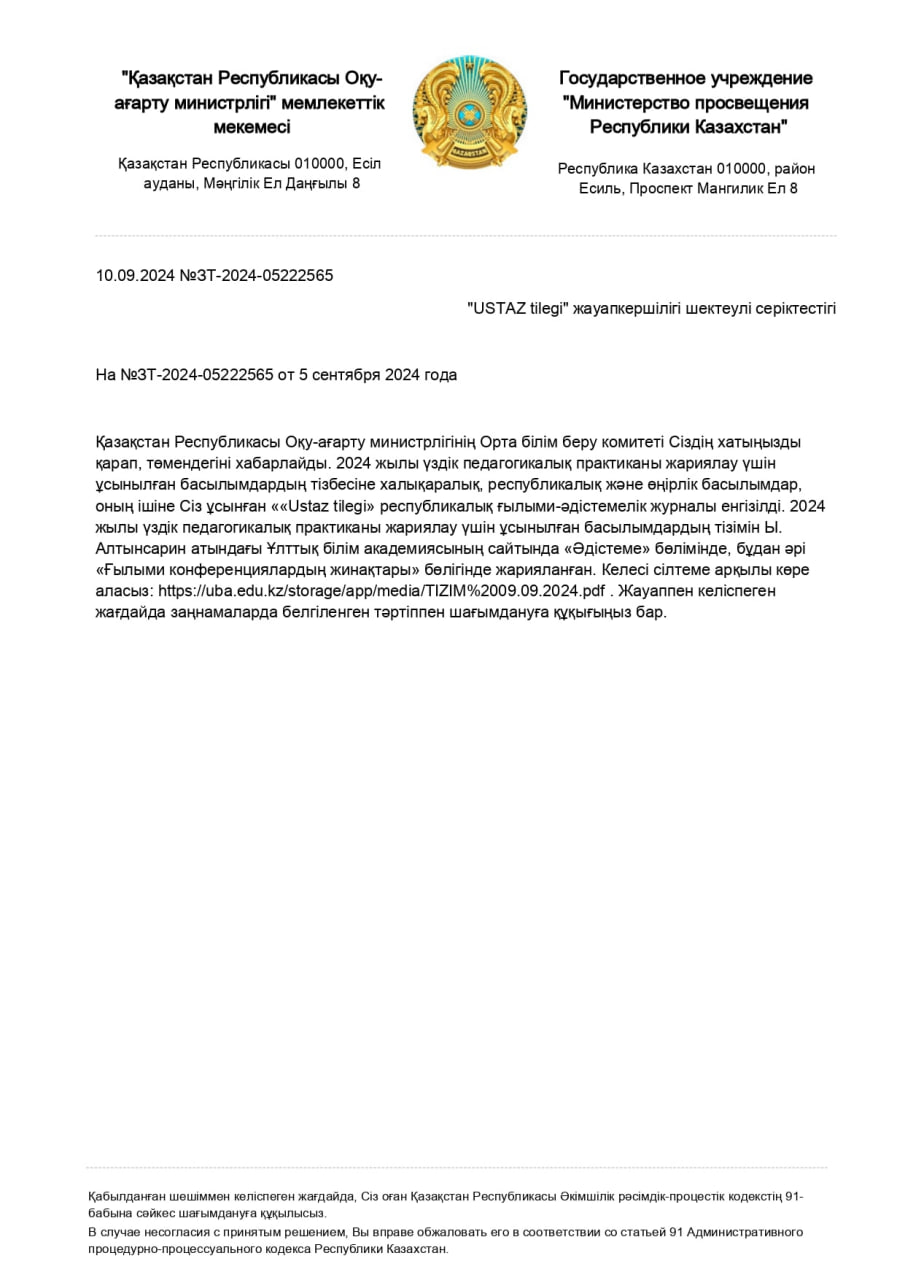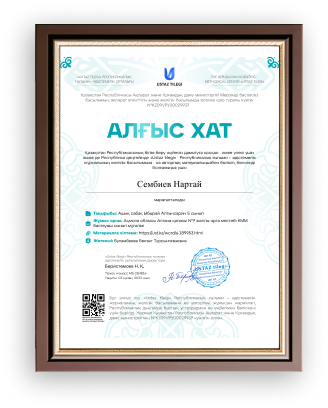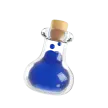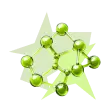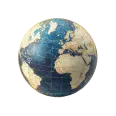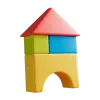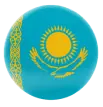
Summative assessment for the unit «The clothes of chemistry»
|
Learning objectives |
11.4.9 11.3.5 11.3.7 |
Recognise inconsistencies in argument in extended text on a range of more complex and abstract general and curricular topics Interact with peers to make hypotheses and evaluate alternative proposals on a range of familiar and some unfamiliar general and curricular topics Use appropriate subject-specific vocabulary and syntax to talk about a range of familiar and some unfamiliar general and curricular topics |
|
Assessment criteria |
|
|
|
Level of thinking skills |
Knowledge and comprehension Application |
|
|
Duration |
20 minutes |
|
|
Reading Task 1. Read the text and select if the statements below are TRUE, FALSE or NOT GIVEN. |
||
|
Trends in the Indian fashion and textile industries At the beginning of the 21st century, with new designers and models, and more sensible designs, India has witnessed acceleration of fashion industry. As far as the global fashion industry is concerned, Indian ethnic designs and materials are currently in demand from fashion houses and garment manufacturers. India is the third largest producer of cotton, the second largest producer of silk, and the fifth largest producer of man-made fibres in the world. The Indian garment and fabric industries have many fundamental advantages, in terms of a cheaper, skilled work force, cost-effective production, raw materials, flexibility, and a wide range of designs with sequins, beadwork, and embroidery. In addition, that India provides garments to international fashion houses at competitive prices, with a shorter lead-time, and an effective monopoly on certain designs, is accepted the whole world over. India has always been regarded as the default source in the embroidered garments segment, but changes in the rate of exchange between the rupee and the dollar has further depressed prices, thereby attracting more buyers. So the international fashion houses walk away with customised goods, and craftwork is sold at very low rates. |
||
|
As far as the fabric market is concerned, the range available in India can attract as well as confuse the buyer. Much of the production takes place in the small town of Chapa in the eastern state of Bihar, a name one might never have heard of. Here fabric-making is a family industry; the range and quality of raw silks churned out here belie the crude production methods and equipment. Surat in Gujarat, is the supplier of an amazing set of jacquards, moss crepes and georgette sheers - |
||
all fabrics in high demand. Another Indian fabric design that has been adopted by the fashion industry is the ‘Madras check’, originally utilised for the universal lungi, a simple lower-body wrap worn in southern India. This design has now found its way on to bandannas, blouses, home furnishings and almost anything one can think of.
Ethnic Indian designs with batik and hand-embroidered motifs have also become popular across the world. Decorative bead work is another product in demand in the international market. Beads are used to prepare accessory items like belts and bags, and beadwork is now available for haute couture evening wear too.
-
1. At the start of the 21st century, key elements in the Indian fashion industry
changed.
2. India now exports more than half of the cotton it produces.
3. Conditions in India are generally well suited to the manufacture of clothing.
4. Indian clothing exports have suffered from changes in the value of its currency.
5. Modern machinery accounts for the high quality of Chapa’s silk.
6. Some types of Indian craftwork which are internationally popular had humble
origins.
Speaking
Task 2. Choose the question from the card on the topics “The cloth of chemistry”, “Recent advances in technology”, “Future careers” and be ready to answer it after the teacher starts the conversation. Produce a speech by giving extended answers to the questions. Share your ideas with the class
Teacher organizes a Socratic seminar, which helps him/her to assess learners while they are speaking on the topics and he/she prepares and cuts down questions and expressions beforehand. Learners sit in a circle and answer the question using in their speech some formal and informal expressions to present logically connected information to their classmates. Learners discuss questions in a class. They share their opinions, ask questions, and comment on classmates’ speech.
-
Stating an opinion
Expressing agreement
Expressing disagreement
Interrupting
The way I see it…..
You have a point there
That’s not always the case
Sorry to interrupt, but…
If you want my honest opinion…..
That’s exactly how I feel
I’d say the exact opposite
If I might add something…..
As far as I’m concerned….
I was just going to say that
No, I’m not so sure about that
Is it okay if I jump in for a second?
If you ask me…….
I have to side with smb
(name)on this one
I beg to differ
Can I add something here?
In my opinion…….
That’s for sure
Not necessarily
Can I throw my two cents in?
These are some Socratic Seminar Ground Rules:
-
Speak so that all students can hear you.
-
Ask for clarification. Don’t stay confused.
-
Speak without raising hands.
-
Stick to the point under discussion.
-
Don’t interrupt.
-
Don’t put down the ideas of another learner.
Questions for Socratic Seminar:
-
What do you think of the fashion industry?
-
How does fashion affect people’s lives?
-
Do you think fashions changed as quickly in the past as today? Why or why not?
-
If you were a fashion designer, what kind of clothes would you design?
-
Do you read e-books? What are their advantages and disadvantages when compared with paper books?
-
Is there an electronic product you want these days? What is it? How will it make your life better?
-
Do you play computer games? What do you say to people who believe they are a waste of time?
-
What crazy future technology are you looking forward to? For example, flying cars or personal robots.
-
Many science fiction movies present a dark vision of the future. Are you optimistic or pessimistic about the future of humanity?
-
Do you think job satisfaction is more important than salary when choosing a job?
-
What skills do you think are needed to get a good job these days?
-
How has technology changed the way we work?
-
What jobs do you think are most valuable to society?
|
Assessment criteria |
Task № |
Descriptor |
Mark |
||||||||||||||||||||||||||||||||||||||||||||||||||||||||||||||||||||||||||||||||||||||||
|
A learner |
|||||||||||||||||||||||||||||||||||||||||||||||||||||||||||||||||||||||||||||||||||||||||||
|
Identify inconsistencies in argument of reading passage |
1 |
1. chooses ‘TRUE’ |
1 |
||||||||||||||||||||||||||||||||||||||||||||||||||||||||||||||||||||||||||||||||||||||||
|
2. chooses ‘NOT GIVEN’ |
1 |
||||||||||||||||||||||||||||||||||||||||||||||||||||||||||||||||||||||||||||||||||||||||||
|
3. chooses ‘TRUE’ |
1 |
||||||||||||||||||||||||||||||||||||||||||||||||||||||||||||||||||||||||||||||||||||||||||
|
4. chooses ‘FALSE’ |
1 |
||||||||||||||||||||||||||||||||||||||||||||||||||||||||||||||||||||||||||||||||||||||||||
|
5. chooses ‘FALSE’ |
1 |
||||||||||||||||||||||||||||||||||||||||||||||||||||||||||||||||||||||||||||||||||||||||||
|
6. chooses ‘TRUE’ |
1 |
||||||||||||||||||||||||||||||||||||||||||||||||||||||||||||||||||||||||||||||||||||||||||
|
Analyze and critically evaluate arguments, provide opinions using appropriate vocabulary and grammar structures Support a talk with peers while agree, disagree and discuss the order of actions and plans to fulfil the tasks Give a full extended response maintaining control, improving fluency and accuracy of speaking using appropriate vocabulary and grammar structures |
3 |
responds considering different perspectives; |
1 |
||||||||||||||||||||||||||||||||||||||||||||||||||||||||||||||||||||||||||||||||||||||||
|
provides evidence to support answer; |
1 |
||||||||||||||||||||||||||||||||||||||||||||||||||||||||||||||||||||||||||||||||||||||||||
|
evaluates and critically analyzes different perspectives; |
1 |
||||||||||||||||||||||||||||||||||||||||||||||||||||||||||||||||||||||||||||||||||||||||||
|
uses more complex and compound grammar structures ; |
1 |
||||||||||||||||||||||||||||||||||||||||||||||||||||||||||||||||||||||||||||||||||||||||||
|
uses sophisticated vocabulary; |
1 |
||||||||||||||||||||||||||||||||||||||||||||||||||||||||||||||||||||||||||||||||||||||||||
|
asks topic related and supporting questions, paraphrase them if necessary; |
1 |
||||||||||||||||||||||||||||||||||||||||||||||||||||||||||||||||||||||||||||||||||||||||||
ЖИ арқылы жасау
ЖИ арқылы жасау
Бөлісу 1 - айлық Материал тарифі-96% жеңілдік 00 05 00 ҚМЖ
Ашық сабақ
Тәрбие сағаты
Презентация
БЖБ, ТЖБ тесттер
Көрнекіліктер
Балабақшаға арнарлған құжаттар
Мақала, Эссе
Дидактикалық ойындар
және тағы басқа 400 000 материал
Барлық 400 000 материалдарды шексіз жүктеу мүмкіндігіне ие боласыз 1 990 ₸ 49 000₸ 1 айға қосылу Материалға шағымдану Бұл материал сайт қолданушысы жариялаған. Материалдың ішінде жазылған барлық ақпаратқа жауапкершілікті жариялаған қолданушы жауап береді. Ұстаз тілегі тек ақпаратты таратуға қолдау көрсетеді. Егер материал сіздің авторлық құқығыңызды бұзған болса немесе басқа да себептермен сайттан өшіру керек деп ойласаңыз осында жазыңыз Жариялаған: TilekshiШағым жылдам қаралу үшін барынша толық ақпарат жіберіңіз SAT term 4 grade 11 The clothes of chemistry
Тақырып бойынша 11 материал табылды
SAT term 4 grade 11 The clothes of chemistryМатериал туралы қысқаша түсінік
SAT term 4 grade 11 The clothes of chemistry
Материалдың қысқаша нұсқасы Summative assessment for the unit «The clothes of chemistry»
all fabrics in high demand. Another Indian fabric design that has been adopted by the fashion industry is the ‘Madras check’, originally utilised for the universal lungi, a simple lower-body wrap worn in southern India. This design has now found its way on to bandannas, blouses, home furnishings and almost anything one can think of. Ethnic Indian designs with batik and hand-embroidered motifs have also become popular across the world. Decorative bead work is another product in demand in the international market. Beads are used to prepare accessory items like belts and bags, and beadwork is now available for haute couture evening wear too.
SpeakingTask 2. Choose the question from the card on the topics “The cloth of chemistry”, “Recent advances in technology”, “Future careers” and be ready to answer it after the teacher starts the conversation. Produce a speech by giving extended answers to the questions. Share your ideas with the class Teacher organizes a Socratic seminar, which helps him/her to assess learners while they are speaking on the topics and he/she prepares and cuts down questions and expressions beforehand. Learners sit in a circle and answer the question using in their speech some formal and informal expressions to present logically connected information to their classmates. Learners discuss questions in a class. They share their opinions, ask questions, and comment on classmates’ speech.
These are some Socratic Seminar Ground Rules:
Questions for Socratic Seminar:
| |||||||||||||||||||||||||||||||||||||||||||||||||||||||||||||||||||||||||||||||||||||||||||



